M1 Carbine
Howdy folks, and welcome back for another Tale of a Gun. This week it’s the M1 Carbine, the light, handy little rifle that served the US (and allies,) through World War II, the Korean Conflict, and even (in the hands of the South Vietnamese,) Viet Nam.
What is the M1 Carbine? That’s kinda like the Garand, right? Most carbines are just cut down versions of a bigger rifle, after all. Not here, though.
This is a case tailor-made to promote confusion. First, the nomenclature. M1 vs M1. In 1925, the military stopped using the date of adoption as a model number, (e.g., the M1911, the M1903, etc,) and started numbering things sequentially. That should be much simpler than calling the Garand the M1938 Garand, or the M1942 Carbine, right? Except that the rifle and carbine were numbered in different sequences, and thus both became the M1. Impeccable logic, there.
The Garand did come first. It was a long and grueling process from inception to adoption, as can be found in last week’s Tale. The result was the “finest battle implement ever devised,” according to General Patton. What was so wrong with it, then, that they needed the carbine?
The Garand is a fantastic rifleman’s rifle. It is powerful, accurate, quick firing, and has amazingly precise and adjustable sights. Of course, it’s also nearly ten pounds. That power translates into significant recoil. Fairly soon after the Garand was fielded, people started to realize that if a soldier’s primary job was anything other than being a rifleman, he might be better served with something smaller and lighter. They couldn’t just cut down the Garand in the traditional way, .30-06 is fairly shootable in a ten pound self-loader. It’s at the limit of what most people can shoot without developing a flinch in a seven pound sporting rifle. When the Army said they wanted a five pound “Light Rifle…” well, that just wasn’t happening in .30-06. Because physics and stuff.
So the military put the requirement out as a hurry-up job, near the beginning of our involvement in the war. Several companies and independent designers submitted guns for trial, but none were quite the thing.
In 1939, Winchester hired David Marshall “Carbine” Williams, a convicted murderer, originally to work on a project they called the G30. The G30 had been designed by John Browning’s half-brother, Ed, as an alternative to the complex machining required for the M1 Garand. “Carbine” Williams added a short-stroke gas piston design he’d developed while serving his sentence at the Caledonia State Prison Farm, in North Carolina. With some judicious tinkering, he was able to get the G30 down to 7.5 lbs.
Testing showed the G30 was still inferior to the Garand, but the success in trimming the weight gave Winchester the confidence to make a try for the “Light Rifle,” project. Using “Carbine” Williams’s short-stroke piston design, a version of the Garand’s rotating bolt, the trigger group from a Winchester 1905, and some other parts-bin engineering, a team of Winchester engineers, (notably not including “Carbine” Williams himself,) were able to have a gun ready for trial in 13 days.
Winchester 1905...
That first test was good enough to earn a second, with some troubleshooting, (so to speak) from Williams along the way.
So what is the M1 Carbine, after all that fuss and bother? It’s a semi-automatic carbine, (naturally,) which weighs a smidge over five pounds, (about half as much as the Garand, which is just under ten.) The rotating bolt looks similar to the Garand, because it is. The gas system is different, however. The Garand taps the barrel near the muzzle, the resulting charge of pressurized gas forces a piston/slide/bolt assembly, which all recoil as one unit, to the rear. In the Carbine, the gas port is much closer to the chamber, (eliminating a long and potentially heavy gas tube.) The high pressure gas hits a piston, which drives the bolt, but only moves a short distance with it.
Another notable difference is in ammunition and capacity. The Garand holds eight rounds of .30-06, famously in its en bloc clip. The Carbine uses detachable box magazines, most often holding fifteen rounds of .30 Carbine.
That brings us to one of the primary limitations of the Carbine, its ammunition. .30-06 is a very powerful round, firing a 150 grain spire point bullet at around 2,800 fps. .30 Carbine pushes a lighter 110 grain round nosed bullet to around 1,900 fps. A lighter bullet going much slower. It makes a difference on both ends. The light little Carbine is downright pleasant to shoot, while the big heavy Garand is… rugged.
TANSTAAFL. There ain’t no such thing as a free lunch. With the Carbine, the cost is paid in terminal ballistics. The Garand generates 2,650 ft/lbs of energy at the muzzle, the little Carbine a mere 950. If that seems like a huge reduction, that’s because it is. But the Carbine wasn’t designed to replace the Garand, it was designed to replace the 1911 for troops who might need a weapon, but couldn’t do their jobs with a “tactical telephone pole” strapped to their backs.
And in that comparison, the little Carbine shines. The .45 ACP of the 1911 only generates about 290 ft/lbs. The 1911 is an excellent pistol, but it’s something of an expert’s gun. The recoil is significant, the sight radius short, and the one-hand gun much harder to aim than a long gun, with four points of contact. The military just didn’t have the time to turn radiomen, combat engineers and truck drivers into highly trained pistoleros.
Instead, they issued them Carbines, and they issued them by the millions. Not only built by Winchester, but by Underwood Typewriter. By Inland Division of General Motors. By Union Switch and Signal Company. Even IBM and the Rock-ola Jukebox Company did their part.
One of those millions went to my grandfather. Private First Class Bill Slater spent his time in the scenic Korean peninsula as an 1812, or mortarman.
Although he trained on a Garand in basic at Fort Knox and loved the power and accuracy, he also vastly preferred the weight of the Carbine, especially when much of the job involved toting heavy objects. The mortar tube and base each weighed about 45 lbs, the ammunition approximately 7 lbs per round, on top of a soldier’s regular kit
He was never one to talk much about his wartime experience, at least not to folks who hadn’t been there, but I do recall his comment on the power issue. “By the time you really need it, none of that’s gonna matter.”
This is not actually the carbine he carried in Korea. Gramps was given the chance to buy his service gun, but at the time—with a young wife and two small children at home—was in no position to do so. He did regret that and years later said wife and one of the children decided to get him one.

This one was built by Underwood-Elliot-Fisher, the typewriter company, in early 1944. How much wear it received in the remainder of the war is unclear, but like so many carbines, it was re-arsenaled later. The sliding rear sight and excellent condition parkerizing are evidence of that. It’s got a full complement of accessories, from the GI web sling and cartridge pouch, to the on-board oil bottle, to an M4 bayonet and scabbard.
Even at 81, it still shoots fast and straight. Dad used it when we went to our one and only 3-gun match, and it outshot many an AR.
I’m fortunate that I’ve never needed it for two legged varmints, but it’s been the gun I’ve grabbed for raccoons and groundhogs here on the homeplace quite a few times. Thank you for your service, little carbine.

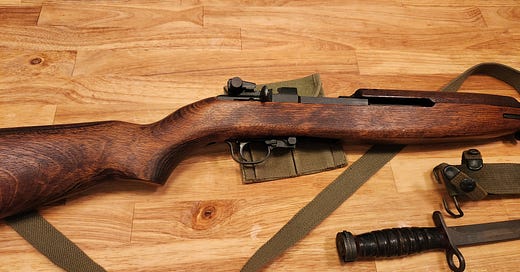





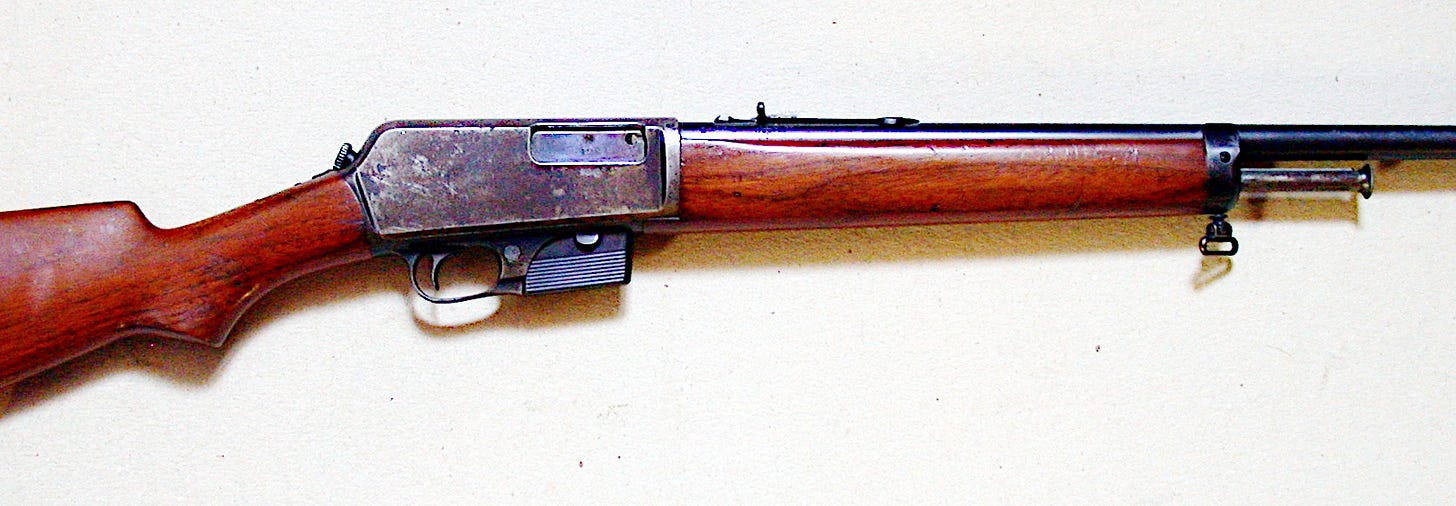
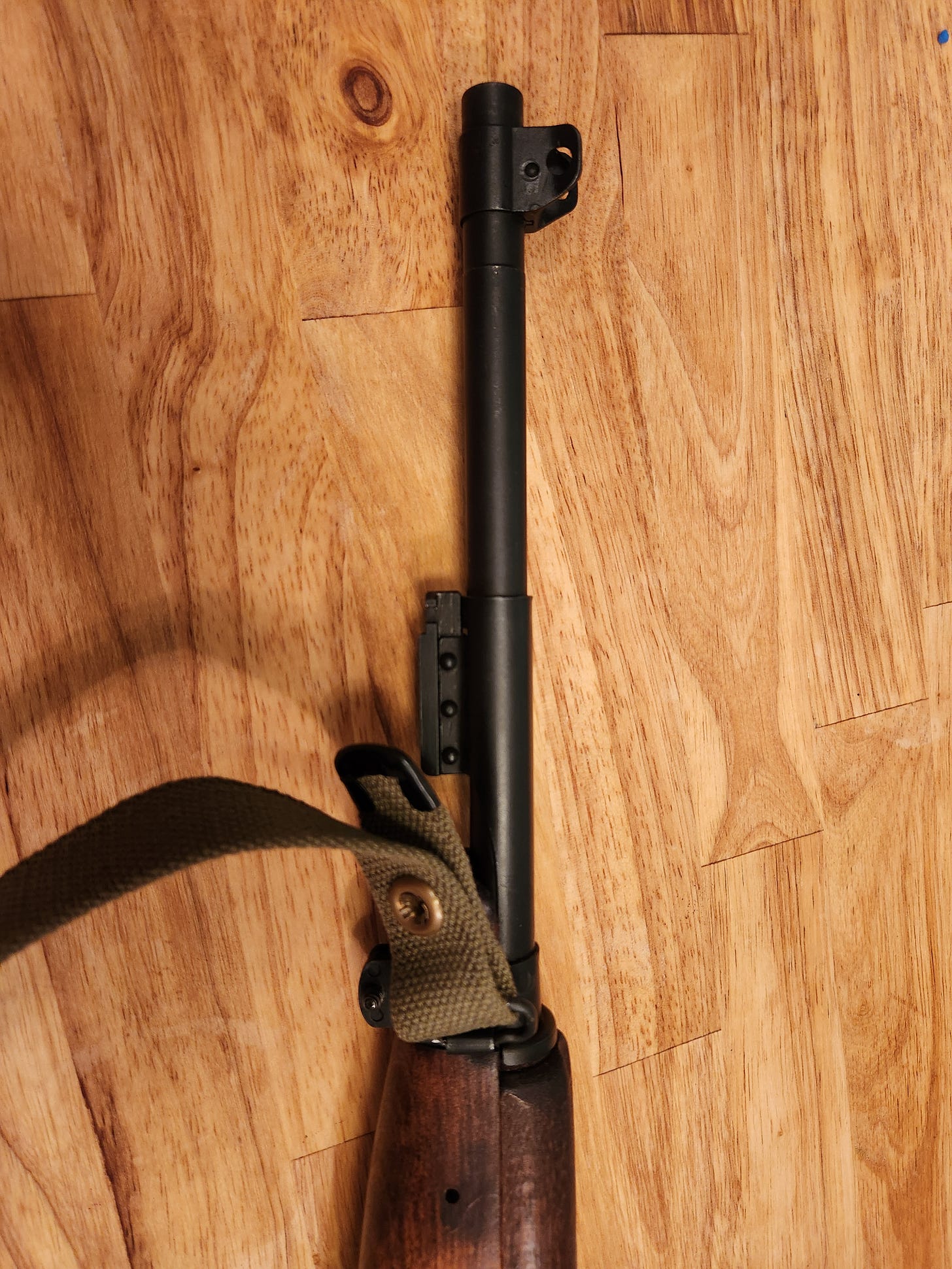



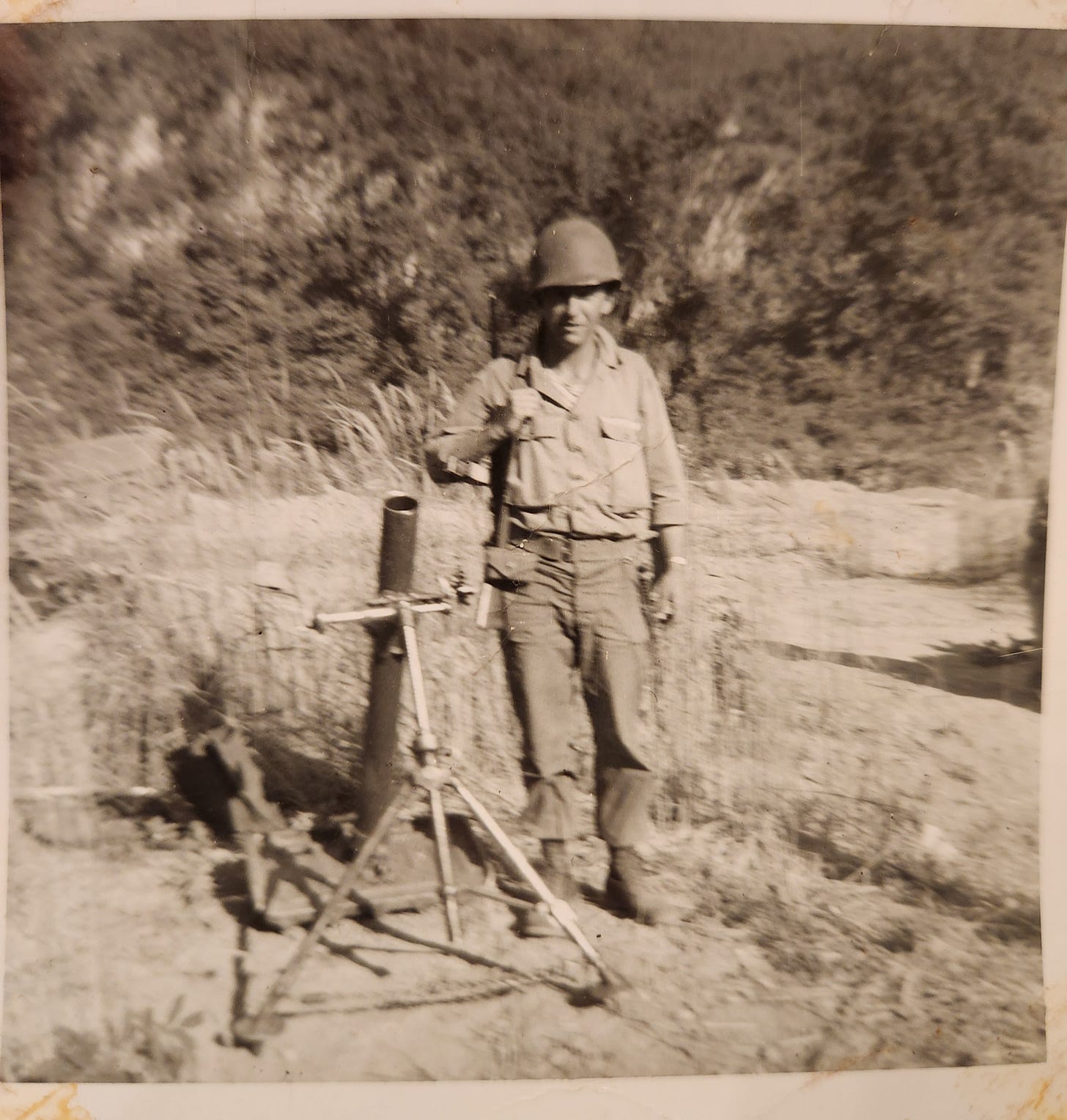
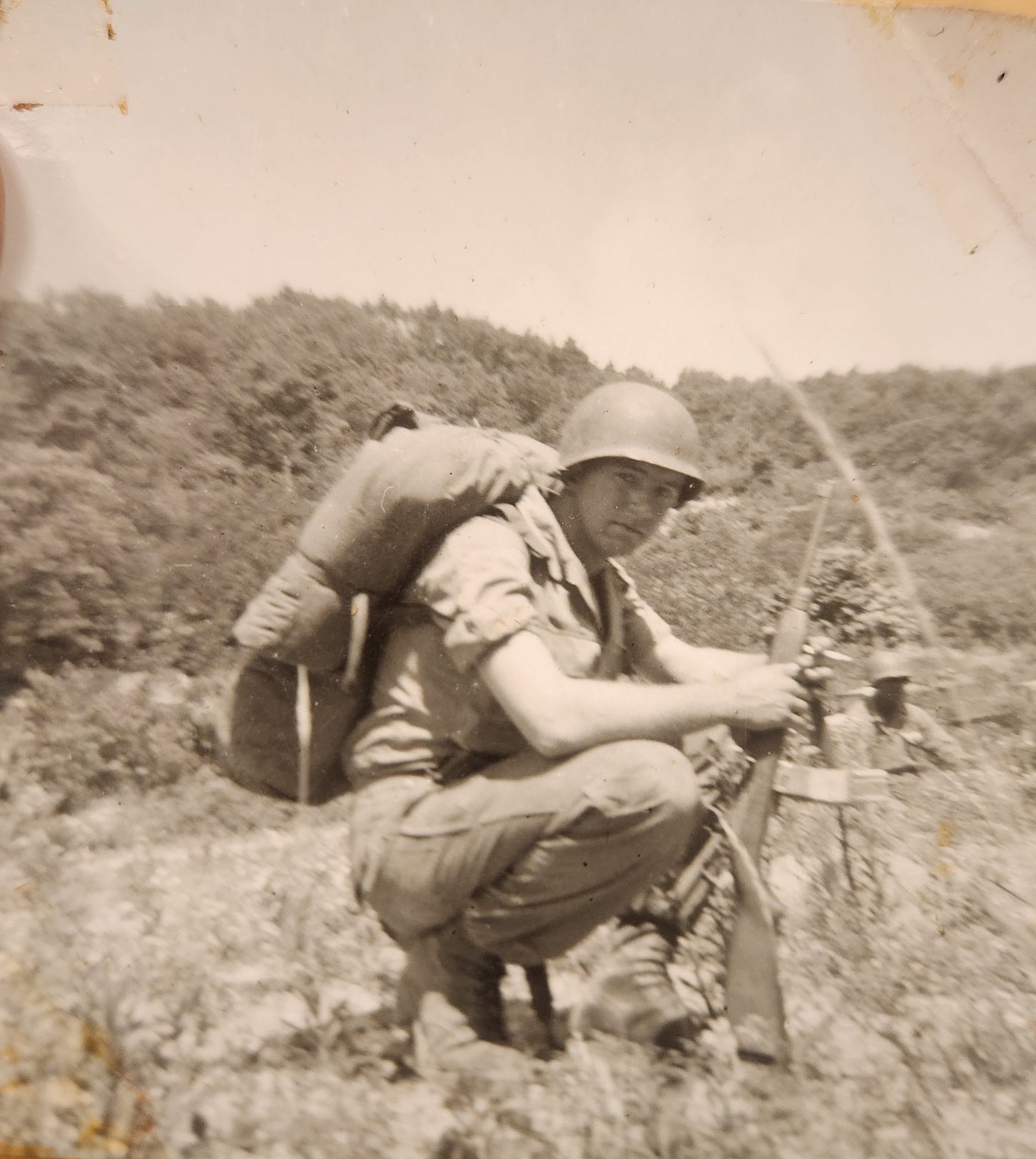
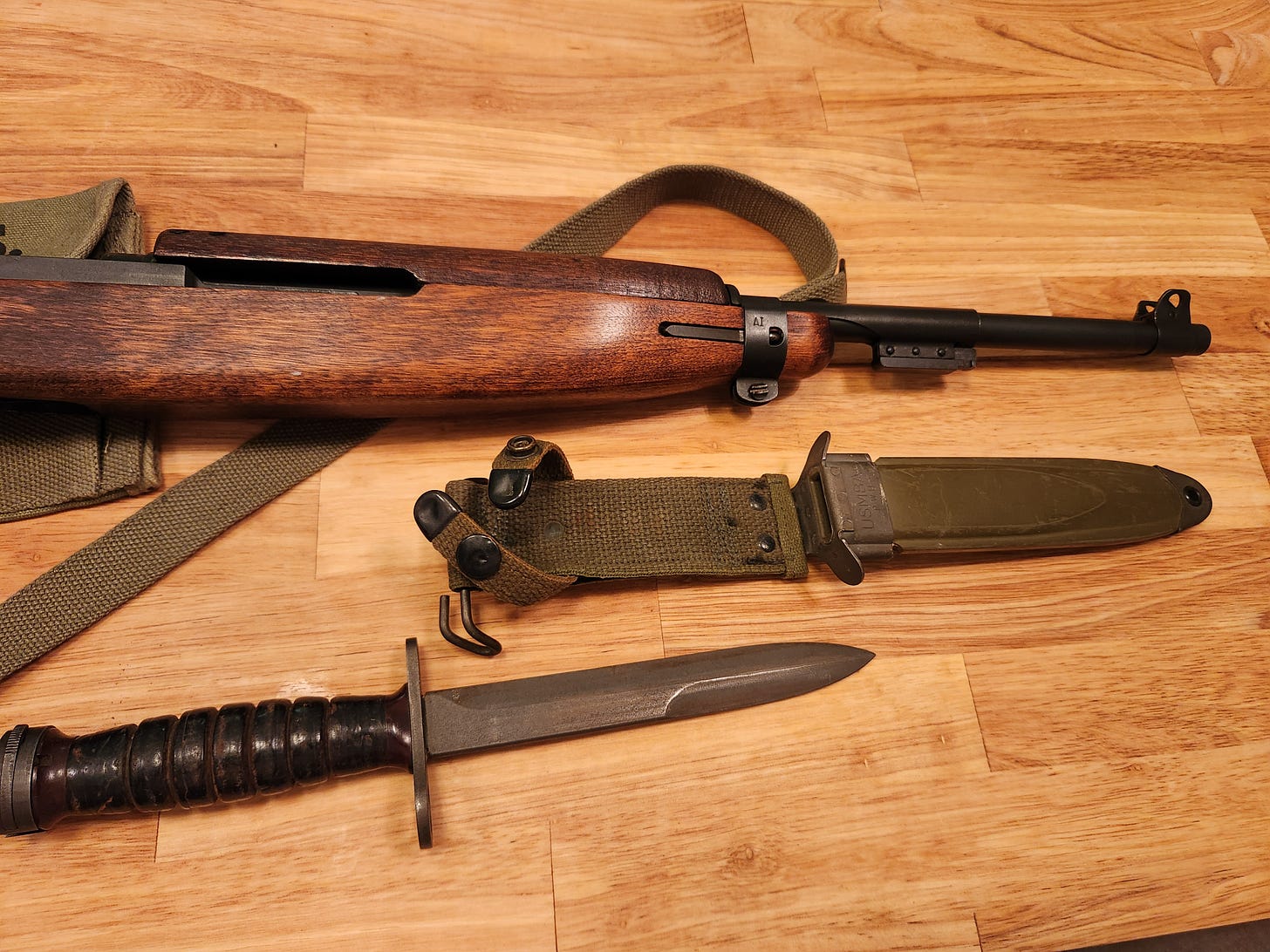
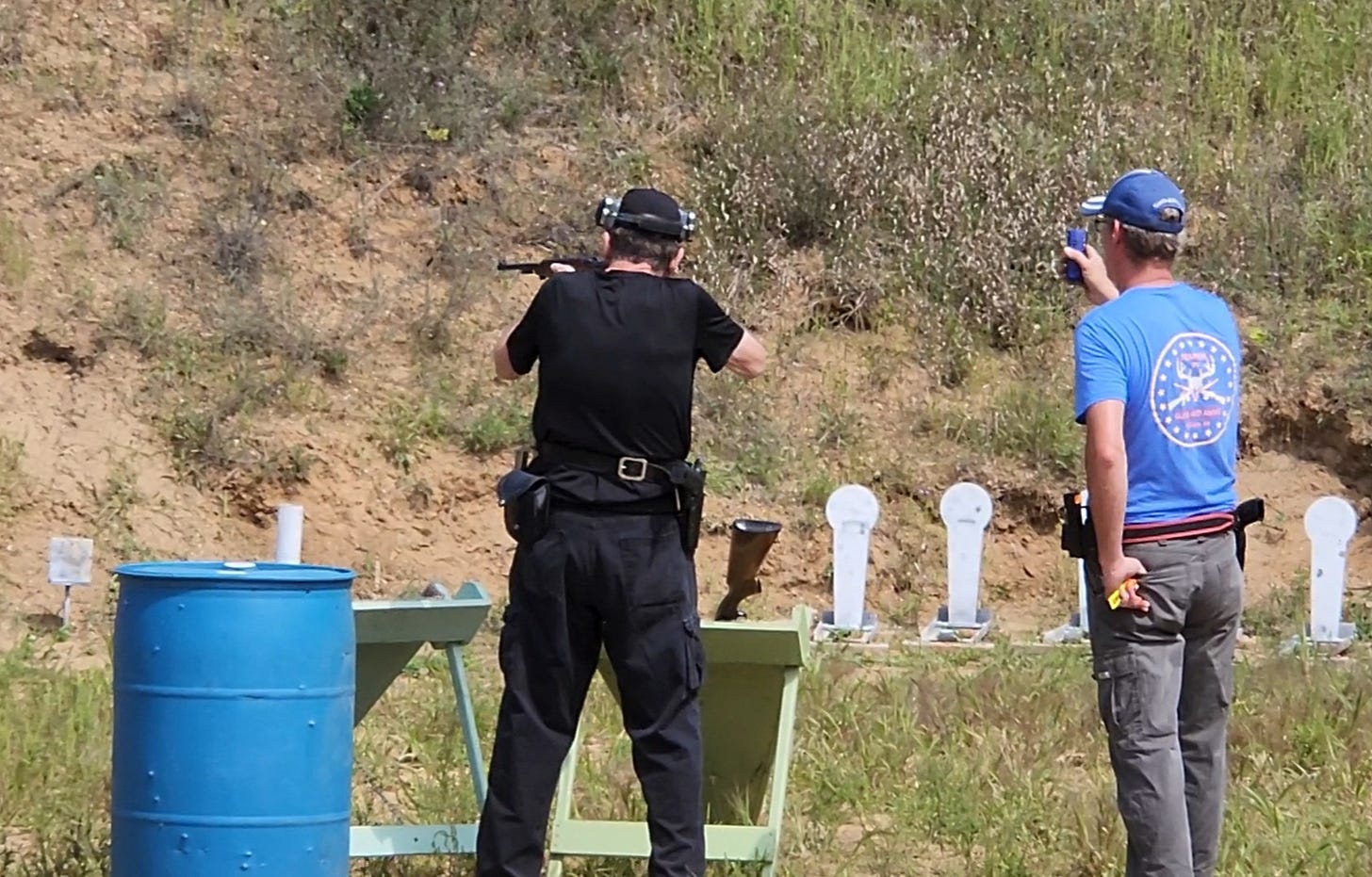
My Grandfather ( an Army Major during WW2 ) carried the M-1 carbine. I am fortunate enough to have it.
Just found this. This one is great! A perfect level of detail for all audiences in my opinion. Have you considered turning these into a book or at least a printable PDF? My 10 y.o. would love something like this in book form!